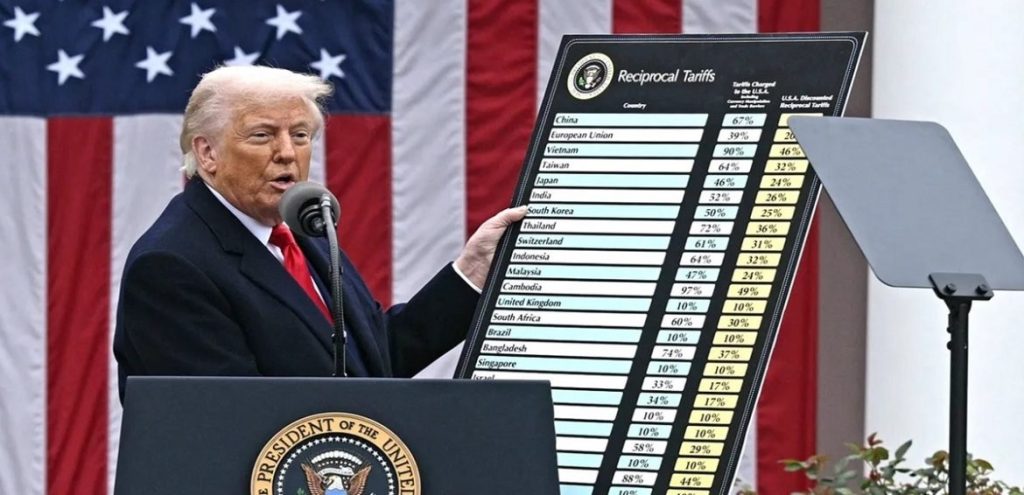Despite concerns over the feasibility of sending $2,000 tariff rebate checks to millions of Americans, President Donald Trump insisted that the payments could be issued within just a few months.
Trump previously wrote on Truth Social that “no less than $2,000 per person” in rebates would be distributed, funded by tariff revenues collected by the United States this year. He later clarified that “high-income earners” would not qualify for these payments, which would go to “middle- and low-income Americans.”
Treasury Secretary Scott Bessent noted that the rebates would be targeted toward working families, with an income cap similar to other federal payment programs. Bessent previously stated that the distribution “could come in multiple forms,” such as “tax credits.”
A White House official told The Hill that the Trump administration is “committed to putting tariff revenues to good use for the American people,” although additional details remain limited.
Expected Obstacles
Trump’s proposal is likely to face several hurdles, including a major one: insufficient tariff revenue. However, Trump said Monday that the rebate checks could be issued next year, and that the revenue would also be used to reduce the federal deficit.
Asked when the rebates would be available, Trump said: “Sometime next year.” He added, “Everyone will get this—except the rich.”
The payments would require action from Congress. Sen. Katie Britt (R-Ala.) said the Senate must “consider” legislation that would provide $2,000 tariff rebate checks to Americans.
Proposed Legislation
Sen. Josh Hawley (R-Mo.) introduced legislation this summer that would send tariff-funded payments similar to the COVID-era stimulus checks.
Under Hawley’s bill, every adult would receive at least $600, and every dependent child would also receive $600. A family of four would therefore receive $2,400.
Payments would increase “if tariff revenues exceed current 2025 projections,” and decrease based on household income.
The bill states that tax credits would phase down based on filing status and adjusted gross income. Income limits are set at $150,000 for joint filers, $112,500 for heads of household, and $75,000 for single filers.
Debt Concerns
Trump endorsed the idea in July, saying the U.S. has “so much money coming in” from tariffs that a “small rebate” is being considered.
However, other Republican senators have expressed concern that Trump’s $2,000 rebate plan could significantly increase the national debt, according to The Hill.
Senate Majority Whip John Thune said he would rather see revenue from higher tariffs used to pay down the national debt, which has climbed to $38 trillion. Sen. Shelley Moore Capito, chair of the Senate Republican Policy Committee, said she wants to review Trump’s proposal closely, but agrees that the revenue should help reduce the deficit.
Is There Enough Money?
According to Axios, the tens of billions collected from tariffs won’t be enough to fund all of Trump’s promises.
For the first time in decades, the U.S. is generating significant tariff revenue that could improve the nation’s financial outlook—a rare bright spot in Trump’s trade policy.
But Trump has promised to reduce the debt, cut the deficit, distribute $2,000 rebates, and bail out farmers—among other commitments. Together, these would cost hundreds of billions, if not trillions—far exceeding expected tariff revenue.
Trump is relying on the funds as a source of relief amid an affordability crisis that hurt Republicans in last month’s elections.
Expected Consequences
Failure to deliver on these promises could bring political consequences in next year’s midterms, especially given strong public interest in the proposed checks.
Last month, “stimulus” was the fourth most searched government-related term on Google.
Business-related searches rose rapidly this month, as did searches related to tariff rebate checks—such as “November 2025 stimulus payment” and “tariff rebate $2000.”
Ken Smetters, director of the Penn Wharton Budget Model, told Axios: “This is the first time—at least in the post-war period—that tariffs are being used primarily as a revenue source.”
The new revenue has created a unique dynamic under Trump. He has promised Americans tariff-funded rebates through multiple unilateral initiatives, despite White House officials acknowledging that Congress must authorize how the money is spent.
But even that is not guaranteed: several Republican senators say they prefer using tariff revenue to pay down debt, a goal Trump himself previously endorsed.
Funding Still Falls Short
Trump said rebates of at least $2,000 per person will be paid to everyone except high earners.
The Penn Wharton Budget Model estimates that all tariffs brought in about $225 billion in revenue in 2025, with roughly $140 billion coming from Trump’s emergency tariff orders.
But the Committee for a Responsible Federal Budget estimates that rebate checks would cost the government $600 billion—double the amount expected annually from Trump’s tariffs.
Their estimate assumes eligibility criteria similar to COVID-era stimulus payments, meaning adults and children under income thresholds of $75,000 (or $150,000 for joint filers) would qualify.
Additional Promises
Trump also promised to use tariff revenue to compensate farmers harmed by the U.S.–China trade war, a commitment requiring up to $12 billion initially.
He also pledged to use tariff funds to reduce the deficit—a plan complicated by the Congressional Budget Office’s recent downward revision of projected tariff revenues by $1 trillion.
Trump is relying on tariff revenue that is likely to shrink in the coming months, partly because the White House is rolling back tariffs to address affordability concerns, and partly due to trade agreements reducing baseline rates.
The Supreme Court is still reviewing the legality of several Trump-imposed tariffs. If they are overturned, the administration may be required to issue refunds to U.S. importers.

